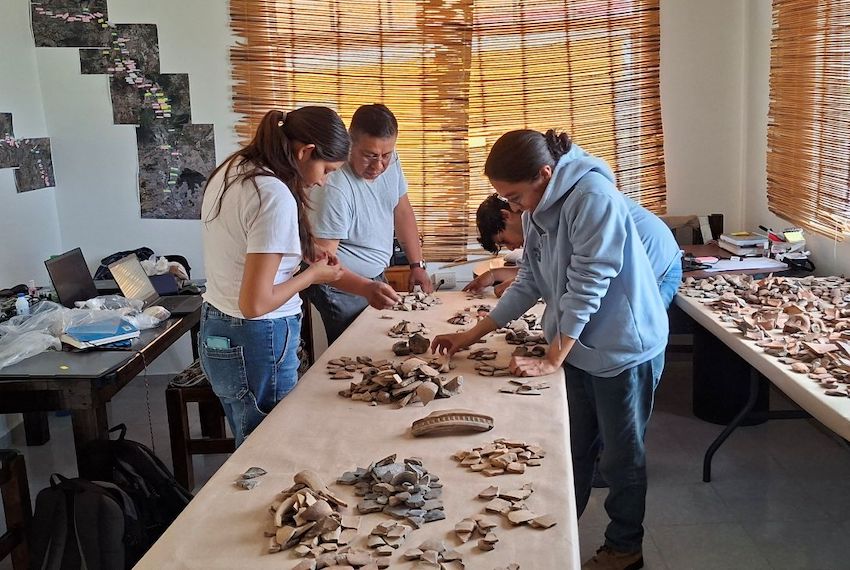As construction began this week on the Saltillo-Monterrey-Nuevo Laredo train line connecting the northern border zone states of Coahuila, Nuevo León and Tamaulipas, archaeologists from the National Institute of Anthropology and History (INAH) are continuing exhaustive field research along that route and three others.
Around 20 archaeologists have walked along 800 kilometers of the routes, much of it consisting of existing tracks. They have been traversing areas earmarked for rail development to identify, assess and ultimately salvage areas and artifacts of historical significance, including archaeological sites from the Classic and post-Classic eras.

The other three routes are one running from the Felipe Ángeles International Airport (AIFA) outside of Mexico City to Pachuca, Mexico City-Querétaro and Querétaro-Irapuato. So far, some 200 significant sites have been found along those routes.
“We have completed 100% of the surface surveys on the right-of-way of the four routes,” INAH Director of Archaeological Rescue Salvador Pulido Ménde said in a press statement.
Seven archaeological sites were registered along the 57-km AIFA-Pachuca route, where pottery and carved stone fragments were found, according to Pulido Méndez.
On the 226-km Mexico City-Querétaro route, 141 sites were identified, 31 of which are of archaeological interest, and one of which is in Tula, once the capital of the Mesoamerican Toltec Empire. A freight train track crosses the site through a tunnel, dividing Tula Grande and Tula Chico, which will be expanded to accommodate the passenger train.
“We have 11 km to investigate and plan to work with several excavations,” said Méndez, referring to the Tula site. “It is a new opportunity to learn more about the capital of the Toltec culture.”
A total of 28 sites were registered along the 108-km Querétaro-Irapuato route in Mexico’s Bajío region, seven of which require excavation works.
On the 390-km Saltillo-Monterrey-Nuevo Laredo route in the north, 27 sites were identified as archaeologically significant.
“There are two cases in which we are studying how to resolve the issue of train passage because rock art was found: Cueva Ahumada and Los Fierros, in Nuevo León,” said Méndez.
Archaeological surveying works will continue in areas along the planned train route, such as overpasses and crossings. But surveying and identification are not the sum total of the task.
“It’s not just about walking around and seeing if there are archaeological remains that need to be moved aside so the train can pass, but about using them to conduct scientific research and proposals,” Méndez said. “In the coming weeks, we hope to begin excavations of the sites with archaeological potential.”
Meanwhile, work on Saltillo-Monterrey-Nuevo Laredo has begun
Construction on the first 100-km section of the Saltillo-Monterrey-Nuevo Laredo train began on Tuesday. The project is expected to generate over 4,700 direct jobs and 14,600 indirect jobs.
Once complete, the route will be capable of transporting up to 7 million passengers a year, with trains running at a speed of between 160 and 200 km an hour.
The connection is part of a larger 1,200 km train network that will connect Mexico City with the border city of Nuevo Laredo.
With reports from El Economista




